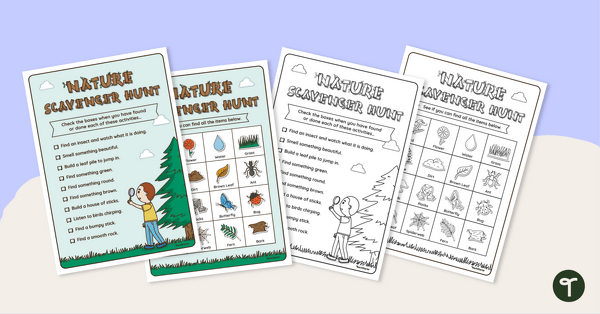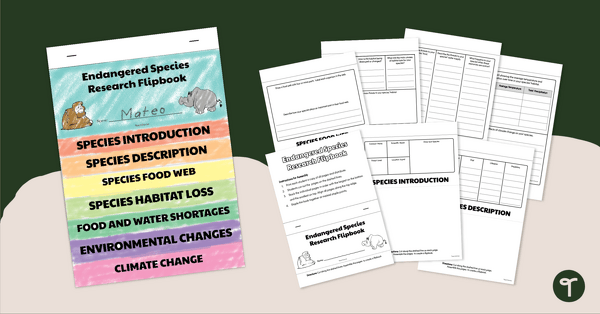Ecosystems and Habitats Teaching Resources
Explore printable ecosystems worksheets, digital habitat activities and more for teaching this important element of the elementary and middle school science curriculum!
This collection of teacher resources was created by teachers to align with NGSS standards, providing you with everything you need to teach kids about biodiversity, habitats and more!
New to teaching about habitats and ecosystems in the primary classroom, or just looking for some fresh ways to engage your students on the topics? Read on for a primer from our teacher team, including a handy definitions for kids on each topic, plus a breakdown of the difference between these two important science terms.
What Is a Habitat? A Definition for Kids
Do you need a quick and easy way to explain the meaning of habitat to your students? Our teacher team has created a definition you can use in the classroom to do just that!
A habitat is a place where plants and animals live. It provides the things that they need to survive, like food, water and shelter.
5 Habitat Examples for Kids to Share in Your Classroom
This definition is a good starting point, but perhaps you're looking for a handy list of habitat examples you can share? We've got you covered with that too!
Please note that this list includes five of the planet's major habitats. Some scientists list as many as 16, however this list includes those our students are most likely to need to know about in primary school.
- Desert — The desert habitat is known for its dry and hot conditions, where animals such as the camel and plants such as cacti thrive. Some examples include the Gobi Desert in China and the Sahara Desert in Africa.
- Marine — Also known as the aquatic habitat, marine is larger of all habitats on the planet. Rivers, lakes, streams and, of course, the five oceans on planet Earth provide homes for a variety of marine animals live — from fish to whales to coral and much more.
- Polar — This habitat is found on the two ends of the earth, called the North and South Poles. Plants and animals that live in the polar habitat have adapted to its extreme cold temperatures.
- Forest – The forest habitat makes up nearly a third of the world's landmass. This habitat can be broken down into different types of forests, including the coniferous forests, coastal forests and tropical rainforests. The latter are known for being warm and very moist — just as the name implies, this habitat gets a lot of rain! The most famous of the world's rainforests is the Amazon which covers 2.6 million square miles.
- Grassland — One of the largest habitats in the world, grassland typically has moderate to warm weather and plenty of grass for animals to graze on.
What Is an Ecosystem? A Kid-Friendly Definition
We've covered the meaning of habitat, but what about ecosystem? Here's a definition from our teacher team to use in the classroom:
An ecosystem is a community of living organisms and nonliving things in a particular area. For example, an ecosystem can include plants, animals and microorganisms that are all living, as well as soil, water and sunlight, which are not.
The living and nonliving things in an ecosystem interact with each other and are interdependent.

Ecosystem vs. Habitat — What's the Difference?
These two science concepts are clearly interrelated, which can be confusing for students. So let's outline the differences.
Habitats
Kids can think of a habitat as a specific place where certain plants and animals live. A habitat is a home, and it's where those plants and animals have everything they need to survive — sort of like the things that students might find in the place where they live. There is shelter, food and water.
Ecosystems
On the other hand, it can be helpful for students to remember that an ecosystem is like a big, interconnected community of habitats.
An ecosystem also goes beyond just plant and animal life.
This larger system includes both living (plants and animals) and non-living (air, water) things. It also includes all the interactions and relationships between the living and non-living things within it.
- Free Plan

In the Arctic - Free Decodable Book
Engage your students and inspire them to read and learn about life in the Arctic with a printable book for 2nd grade.
- Free Plan

Ocean Animals Word Wall Cards with Pictures
Introduce your students to the amazing animals in the sea with an illustrated ocean animal word wall.
- Free Plan

Plant and Animal Adaptations – Word Wall Vocabulary
Build scientific vocabulary skills with a printable display of words relating to plant and animal adaptations.
- Free Plan

Producer, Consumer, Decomposer - Poster
A poster explaining the roles of the Sun, producers, consumers, and decomposers in the food chain.
- Plus Plan

Animal Habitat Diorama Project
Plan an Animal Habitat Project for your students with our animal habitat diorama project pack.
- Free Plan

Free Printable Nature Scavenger Hunt
Make outdoor play a learning opportunity with our free printable nature scavenger hunt PDF.
- Plus Plan

Science Sparks - 2nd Grade Science Activity Cards
Review science standards during classroom downtime with Science Sparks, a collection of 2nd grade science activities for fast finishers.
- Plus Plan

Animals and Their Habitats - Cut and Paste Worksheets
Match the animals and their habitats with a pack of printable cut and paste worksheets.
- Plus Plan

Animals in Winter - Kindergarten Science Worksheet
Cut and sort animals that hibernate, migrate, and adapt with an ‘Animals in Winter’ sorting activity.
- Plus Plan

Winter Animals Coloring Page Booklet
Engage your little learners and build vocabulary skills with a printable winter animals coloring book.
- Free Plan

Desert Word Wall Vocabulary
Spark discussion and build academic vocabulary with a desert related vocabulary word wall.
- Plus Plan

What Do Plants Need? Plant Habitat Interactive Game
Help some lost plants return to the correct habitat with a Google Slides interactive activity.
- Plus Plan

What is Pollution? Instructional Slide Deck
Show your students the types of pollution and their effects with an instructional slide deck.
- Plus Plan

Deciduous Forest Biome Slide Deck
An 11-slide editable PowerPoint to use in the classroom when learning about deciduous forests.
- Plus Plan

Printable Worksheets About Bees - 2nd Grade
Use our 2nd grade worksheets about bees to discover what there is to know about bees, how they help plants, and how they make honey.
- Plus Plan

Science Sparks - 4th Grade Science Activities
Give your students a little science boost with Science Sparks 4 – our newest set of fast finisher science activities for 4th grade!
- Plus Plan

Science Sparks - 5th Grade Science Activities for Fast Finishers
Review science standards during classroom downtime with Science Sparks, a set of 5th grade science activities for fast finishers.
- Plus Plan

European Ecosystem Project
Explore the natural environment of Europe with this engaging European Ecosystem project.
- Plus Plan

Ecosystem Poster Pack
Introduce your students to the different types of ecosystems with a set of printable Ecosystem posters.
- Plus Plan

Human Innovation and Environmental Conservation Teaching Slides
Teach your students how human innovation is helping conserve the environment with this teaching presentation perfect for upper elementary students.
- Plus Plan

Biodiversity in a Habitat – Inquiry-Based Project
Use this biodiversity project to teach your students about the importance of species survival to life on Earth.
- Plus Plan

Endangered Species Research Flipbook
Get your students to research an endangered species using this easy-to-compile flipbook scaffold.
- Plus Plan

Species Survival Scenario Task Cards
Explore how to save endangered species with this set of 16 species survival scenario cards.
- Plus Plan

Animals Around the World - Word Mats
Discover the amazing animals on each continent and encourage global thinking with a pack of printable Animals Around the World Word Mats.
- Plus Plan

Classification of Animals - Teaching Slides
Teach your students about the different classes of animals and their characteristics with an Animal Classification teaching presentation.
- Plus Plan

Preschool Arctic Animal Lacing Cards
Help your students develop fine motor skills with a set of Preschool Arctic Animals lacing cards.
- Plus Plan

Tropical Rainforest Animal Adaptations Fact Template
Discover amazing rainforest animals’ adaptations and display your learning with miniature printable rainforest animal report templates.
- Plus Plan

Would You Rather? Animal Adaptations Game
Discuss and debate the best animal adaptations with the Would You Rather? Animal Adaptation game.
- Plus Plan

Animals in Winter - Adaptations Mini Book
Discover the amazing adaptations of animals in winter with a printable mini-book.
- Plus Plan

What Animals Migrate? Teaching Slide Deck
Discover why animals migrate and which ones make the longest journeys with an interactive teaching slide deck.
- Plus Plan

Desert Animal Adaptations - Trading Card Templates
Discover amazing desert animals’ adaptations and display your learning with printable animal trading card templates.
- Plus Plan

Animals that Use Camouflage - Fact File Cards
Discover animals that camouflage to survive using these printable Animal Fact File cards.
- Ecosystems and Habitats Worksheets
- Ecosystems and Habitats for Kindergarten
- Ecosystems and Habitats for 1st Grade
- Ecosystems and Habitats for 2nd Grade
- Ecosystems and Habitats for 3rd Grade
- Ecosystems and Habitats for 4th Grade
- Ecosystems and Habitats for 5th Grade
- Ecosystems and Habitats for 6th Grade